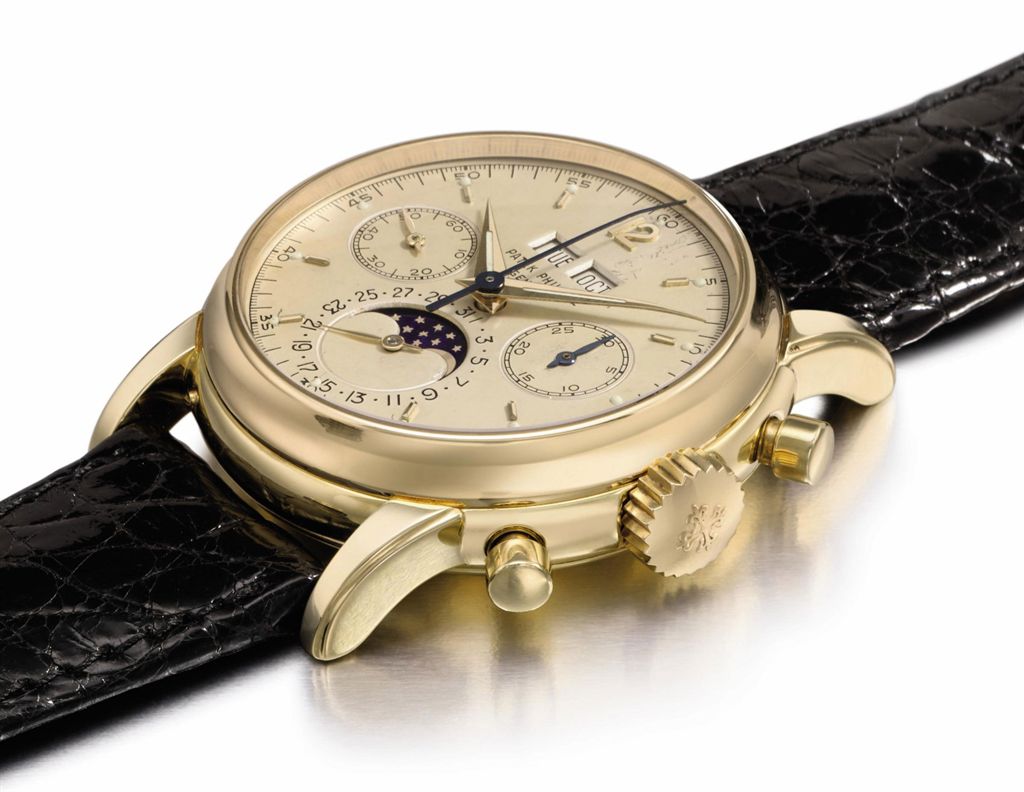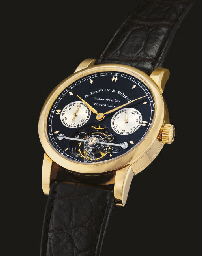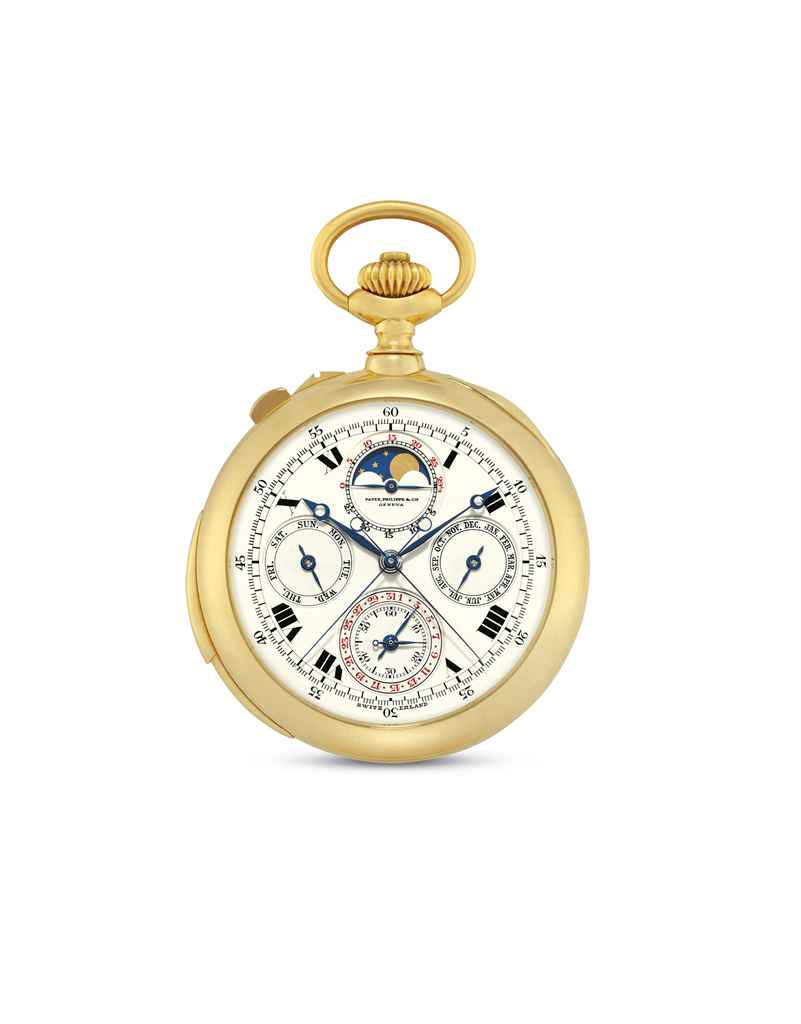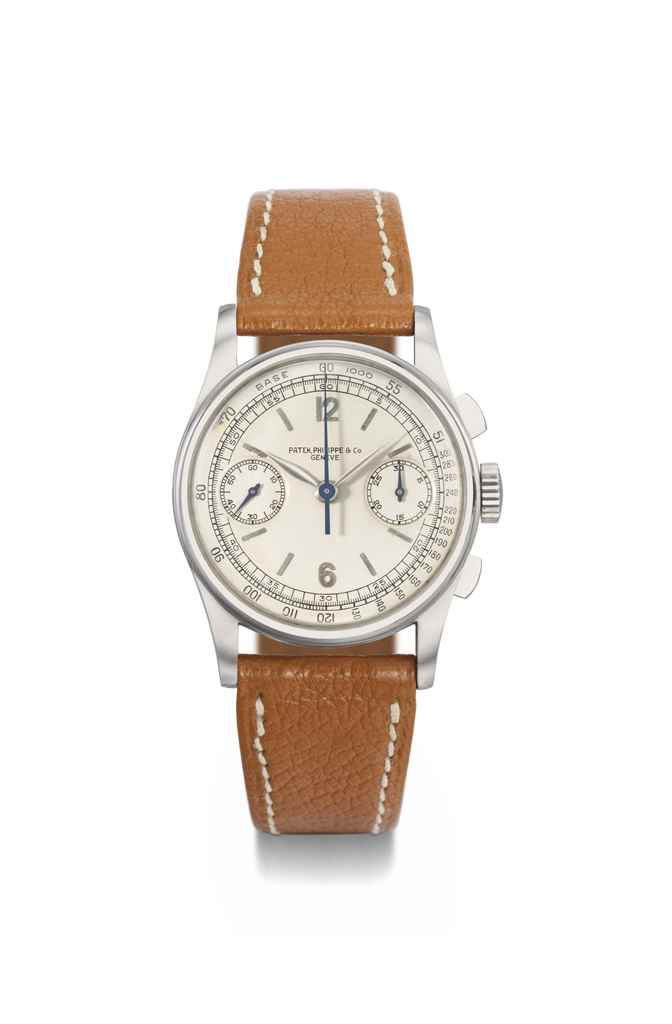A fine and rare George III mahogany table timepiece William Dutton, London, circa 1780 The substantial five pillar single fusee movement with bolt-and-shutter maintaining power and anchor escapement regulated by heavy lenticular bob pendulum with pivoted beam rise/fall regulation to suspension, the backplate engraved with script signature Will'm Dutton, London above pivoted pendulum holdfast bracket, the 7 inch brass break-arch dial applied with circular silvered Roman numeral centre incorporating shaped false bob aperture over repeat signature Will'm Dutton, London, and calendar aperture within Arabic five minutes to outer track, with fine pierced blued steel hands and rococo scroll cast and pierced spandrels to angles beneath arch centred with silvered subsidiary rise/fall regulation adjustment dial flanked by conforming mounts, the break-arch case with hinged brass carrying handle and three generous moulded rectangular pads to top over glazed front door with raised mouldings to the aperture and conforming blind break-arch panels to sides, the rear with further glazed break-arch door set within the frame of the case, on cavetto moulded skirt base with squab feet, 38cm (15ins) high excluding handle. William Dutton is recorded in Baillie, G.H. Watchmakers & Clockmakers of the World as apprenticed to George Graham in 1738 and gained his freedom of the Clockmakers' Company in 1746. In around 1750 he went into partnership with Thomas Mudge another former apprentice and successor to George Graham and worked from 148 Fleet Street, London, where the business was to remain through successive generations of the Dutton family. William Dutton was elevated to Liveryman in 1766 and alongside Mudge developed the lever escapement for watches in 1771; shortly after which Thomas Mudge retired to Plymouth in order to spend more time to pursue his development of a marine timekeeper. In around 1775 Dutton took both his sons (Thomas and Matthew) into the business forming a second partnership of William Dutton and Sons however the name Mudge and Dutton was often still used (mainly for watches) up to around 1790. William Dutton died in 1794 leaving the business to be continued very much in his tradition by his sons Thomas and Matthew. The work of William Dutton can be characterised by its distinctive originality, high quality and attention to detail which one would come to expect from a clockmaker who, alongside Thomas Mudge succeeded George Graham who in turn had succeeded Thomas Tompion The current lot is a textbook example of the fully developed form of 'triple pad top' top table clock made popular by Mudge and Dutton during the third quarter of the 18th century. When compared with the following lot the subtle evolution of this type of case can be seen; indeed the principal differences are the use of raised mahogany mouldings and break-arch side panels on the current lot opposed brass fillet mouldings to the dial aperture and full-arch side frets on the following example. These differences demonstrate how the Dutton workshop introduced subtle updates to their case design, to ensure that their products appeared up to date and 'modern', without compromising the distinctiveness of their product. Condition report disclaimer
A fine and rare George III mahogany table timepiece William Dutton, London, circa 1780 The substantial five pillar single fusee movement with bolt-and-shutter maintaining power and anchor escapement regulated by heavy lenticular bob pendulum with pivoted beam rise/fall regulation to suspension, the backplate engraved with script signature Will'm Dutton, London above pivoted pendulum holdfast bracket, the 7 inch brass break-arch dial applied with circular silvered Roman numeral centre incorporating shaped false bob aperture over repeat signature Will'm Dutton, London, and calendar aperture within Arabic five minutes to outer track, with fine pierced blued steel hands and rococo scroll cast and pierced spandrels to angles beneath arch centred with silvered subsidiary rise/fall regulation adjustment dial flanked by conforming mounts, the break-arch case with hinged brass carrying handle and three generous moulded rectangular pads to top over glazed front door with raised mouldings to the aperture and conforming blind break-arch panels to sides, the rear with further glazed break-arch door set within the frame of the case, on cavetto moulded skirt base with squab feet, 38cm (15ins) high excluding handle. William Dutton is recorded in Baillie, G.H. Watchmakers & Clockmakers of the World as apprenticed to George Graham in 1738 and gained his freedom of the Clockmakers' Company in 1746. In around 1750 he went into partnership with Thomas Mudge another former apprentice and successor to George Graham and worked from 148 Fleet Street, London, where the business was to remain through successive generations of the Dutton family. William Dutton was elevated to Liveryman in 1766 and alongside Mudge developed the lever escapement for watches in 1771; shortly after which Thomas Mudge retired to Plymouth in order to spend more time to pursue his development of a marine timekeeper. In around 1775 Dutton took both his sons (Thomas and Matthew) into the business forming a second partnership of William Dutton and Sons however the name Mudge and Dutton was often still used (mainly for watches) up to around 1790. William Dutton died in 1794 leaving the business to be continued very much in his tradition by his sons Thomas and Matthew. The work of William Dutton can be characterised by its distinctive originality, high quality and attention to detail which one would come to expect from a clockmaker who, alongside Thomas Mudge succeeded George Graham who in turn had succeeded Thomas Tompion The current lot is a textbook example of the fully developed form of 'triple pad top' top table clock made popular by Mudge and Dutton during the third quarter of the 18th century. When compared with the following lot the subtle evolution of this type of case can be seen; indeed the principal differences are the use of raised mahogany mouldings and break-arch side panels on the current lot opposed brass fillet mouldings to the dial aperture and full-arch side frets on the following example. These differences demonstrate how the Dutton workshop introduced subtle updates to their case design, to ensure that their products appeared up to date and 'modern', without compromising the distinctiveness of their product. Condition report disclaimer















Try LotSearch and its premium features for 7 days - without any costs!
Be notified automatically about new items in upcoming auctions.
Create an alert